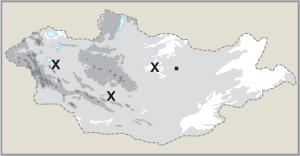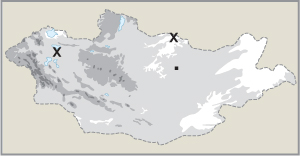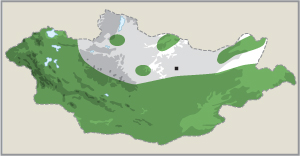
PLATE 44: SKUAS & SANDGROUSE
Pomarine Skua Stercorarius pomarinus
46–51 cm

ID Skuas are gull-like, but are darker than even juv gulls. They occur in two colour morphs. In adults the dark morph appears uniformly chocolate-brown; the light morph has contrasting white underparts, throat and nape, and yellowish cheeks. In breeding plumage, Pomarine may be readily distinguished from Arctic Skua by twisted, blunt-ended central tail feathers. In other plumages, distinctions are comparative: Pomarine is larger, ‘chestier’ bird with broader wing bases; is notably dark (almost blackish) brown compared to Arctic’s paler plumage tones; tends to have very prominent dark breast-band and conspicuous dark barring on flanks; has a heavier bill with pink base and black tip (vs. Arctic’s uniformly dark); has more ponderous, less agile manner of flight; and tends to show more white in ‘flashes’ at base of primaries. Juv Arctic tends to have cinnamon tinge to head and underparts and more conspicuous barring below, while blue-grey bill base in juv Pomarine is often helpful distinction, even at long range. These birds are highly variable in plumage, however, and colour tones vary with ambient light conditions; therefore many skuas cannot be identified to species even by experienced observers. Voice Usually silent away from breeding grounds. Habitat Breeds on Arctic tundra; otherwise a highly pelagic seabird, except on migration when it may visit large inland lakes. Behaviour Piratical, stealing prey from other birds; also scavenges. Status Vagrant. One at Lake Khar, Khovd province (undated), one adult light morph at Dashinchilen Tsagaan Nuur, Bulgan province, 25–26 August 2006 and one at Lake Bööntsagaan, Bayankhongor province, 30 September 2006. [Alt: Pomarine Jaeger]
Arctic Skua Stercorarius parasiticus
41–46 cm

ID Smaller and slighter than Pomarine Skua in all plumages. For detailed distinctions, see above. Voice Usually silent away from breeding grounds. Habitat Breeds in Arctic and subarctic tundra; otherwise a highly pelagic seabird. Occasionally recorded on large inland lakes during migration. Behaviour Very similar to Pomarine Skua. Status Vagrant. Single birds near the Buur River, Selenge province, August 1991; and Lake Airag, Uvs province, August 2000. [Alt: Arctic Jaeger, Parasitic Jaeger]
Pallas’s Sandgrouse Syrrhaptes paradoxus
30–41 cm

ID Unlikely to be confused with any other Mongolian species due to its unique form – resembling a hybrid between a grouse and a pigeon with long, pointed wings and ‘pin-tail’ – and its behaviour and habitat. Voice Various calls, including quat, harsh kikiki and crooning cryoo-ryoo, call habitually given in flight. Habitat Arid steppe and Gobi Desert. Behaviour Walks on ground, foraging for seeds and other plant material. At dawn and dusk, flies in flocks to waterholes where males soak their specially modified belly feathers to carry water to nestlings. Nest is scrape on open ground. Forms large post-breeding flocks and has been known to undertake mass dispersals, reaching as far as British Isles. Status Common resident breeder across dry, open regions with sandy soils, from Great Lakes Depression to Dornogobi. Locally and seasonally abundant when conditions induce irruptive migrations of wintering flocks.